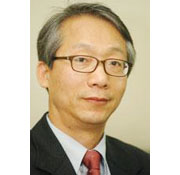In front of the main office of the Korea Tourism Organization (KTO) in Seoul stands a small stele that is engraved with words by late President Park Chung-hee, the father of President-elect Park Geun-hye.
It reads “For the Promotion of Tourism,” and the date shows the commemorative stone slab was set up in March 1973.
It was the late President Park who not only founded the KTO but also gave fresh impetus to developing tourism in a country that had nothing but beautiful weather at that time. Plans to establish basic facilities to invite and accommodate tourists, ranging from the Bomun Resort in Gyeongju to Mt. Seorak and the Jeju Tourist Complex, were made and implemented during his presidency.
As there were no foundations on which Korea could make an economic jump, he tried to open the domestic market for foreigners in every conceivable way. The promotion of tourism was part of such efforts. Although having been criticized, even until now, for his political dictatorship, Park deserves appreciation for developing the Korean economy, including tourism.
The number of foreign visitors has increased sharply since then. In 1978, the number of arrivals exceeded 1 million and reached 2 million in 1988 when Korea successfully hosted the Seoul Olympic Games. Along came a major replenishment of tourist attractions along with basic facilities such as hotels and shopping centers throughout that period.
Korea welcomed more than 11 million foreign visitors last year, thanks mainly to an influx of Chinese and Japanese tourists. It was the first time that foreign visitors to Korea exceeded 10 million in a year.
Now we can always run into foreign visitors, holding maps on the streets and in the subways, a result of the government’s extensive “Visit Korea” campaign. Korea’s tourism industry has cemented its status as a “factory without chimneys.”
It is too early, however, for Koreans to uncork the champagne. We know that New York City alone attracted 11 million foreign visitors last year. That means Korea has just entered into the ranks of “must-visit” countries.
Another problem is a large number of the foreign visitors are Chinese and Japanese. Geographic proximity and cultural homogeneity may be two of the biggest reasons. Without them, it will not be easy to attain yearly visitor objectives and far more so this year, as the Japanese government will drastically weaken the value of its currency. There are already noticeably fewer Japanese tourists in Myeong-dong and other shopping districts.
There is insufficient tourism infrastructure, including accommodation, while various signs are still difficult for foreigners to understand. Also, visitors find it rather difficult to communicate with locals who neither can nor will respond positively to tourists’ advances.
So it is good news that the government has proposed to make signs in English, Chinese, and Japanese as well as Korean.
Incheon will host the 17th Asian Games next year, followed by the PyeongChang Winter Olympics in 2018. These are occasions when Korea should hit a new arrival goal of 20 million.
It will depend less on hardware than software, such as greater and more spontaneous hospitality and a well-worn modesty among ordinary Koreans.
The writer is a freelance columnist. Contact him at gracias1234@naver.com. <The Korea Times/Hu Young-sup>




